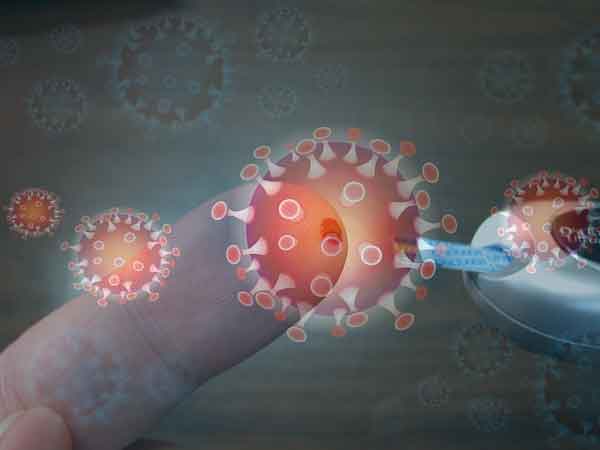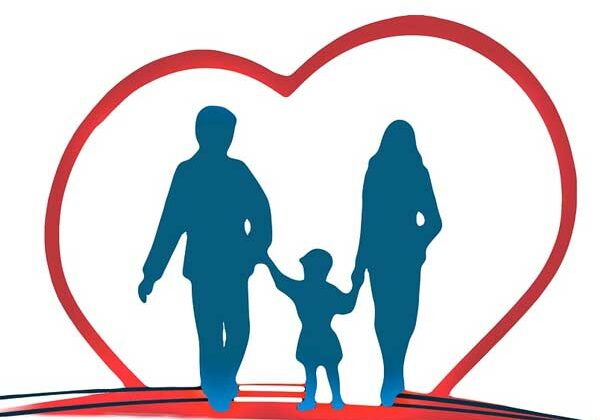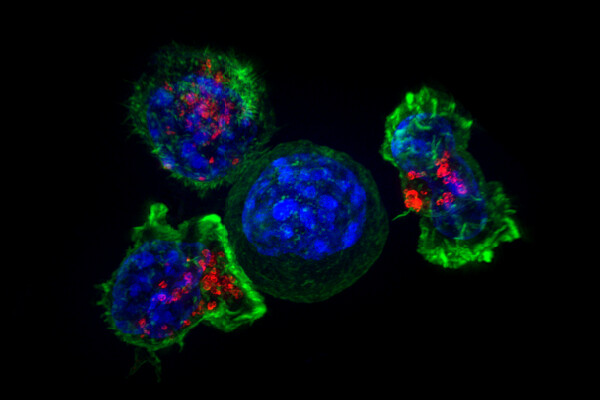Scottish National study calls into question COVID-diabetes link in young people
Scottish study of over 1.8 million people aged under 35 suggests that increased short-term type 1 diabetes risk after contracting COVID-19 is unlikely to be due to the infection itself, and may be partly explained by increased testing around the time of diabetes diagnosis.
New research, being presented at this year’s European Association for the Study of Diabetes (EASD) Annual Meeting in Stockholm, Sweden (19-23 Sept), found that testing positive for SARS-CoV-2—the virus that causes COVID-19—is associated with an increased incidence of new-onset type 1 diabetes in people aged younger than 35 years, but this is restricted to the first month after infection, and is more likely explained by increased testing around the time of diabetes diagnosis and COVID-19 precipitating diabetes in those already developing it.
The study linked data on COVID-19 tests results to the Scottish diabetes register for the period between March 2020 and November 2021 [1], and tested whether this period of COVID-19 infection was associated with an increased risk of diabetes.
“Our findings call into question whether a direct association between COVID-19 and new-onset type 1 diabetes in adults and children exists”, says co-lead author Professor Helen Colhoun from Public Health Scotland and the University of Edinburgh, Scotland. “One recent report by researchers at the US Centers for Disease Control and Prevention (CDC), analysing two large insurance-claim databases of those under age 18, found that children with COVID-19 were 2.5 times as likely to be diagnosed with diabetes over a month after infection than those who were never infected. If replicated, this is going to create a large number of people with newly diagnosed diabetes and might also alter the risk–benefit balance for COVID-19 vaccination in young children. Importantly, we did not confirm that finding.”
In type 1 diabetes, which usually appears during childhood or adolescence, the immune system attacks insulin-producing cells, but it is not known why. One theory is that the immune system may be triggered by a viral infection and then accidentally also attacks insulin-producing cells. It has also been suggested that viral infections may increase the rate of progression of type 1 diabetes in people who still have normal blood sugar levels.
In this study, Colhoun and colleagues linked individual-level data on PCR-confirmed SARS-CoV-2 infections from the Electronic Communication of Surveillance Database, which captures all PCR tests for COVID-19 nationally, with precise dates of all new type 1 diabetes diagnoses from the national register in Scotland (that is updated daily).
During the study period a confirmatory PCR test was mandatory for all those with a positive lateral flow test.
The important aspect of this study is the exact dates of diabetes diagnosis were available, unlike in some earlier studies, ensuring that the time sequence of COVID-19 and type 1 diabetes could be established.
Between March 2020 and November 2021, a total of 365,080 children and adults had at least one detected SARS-CoV-2 infection, and 1,074 were diagnosed with type 1 diabetes.
The analysis found no association between SARS-CoV-2 infection and new-onset type 1 diabetes 30 days or more after infection, or in those aged younger than 16 years, contrary to several previously reported studies.
However, the researchers did find that children and adults with a first positive SARS-CoV-2 test were 2.5 times as likely to be diagnosed with diabetes within 30 days of infection compared to those who did not have a previous registered infection; this risk was more than three times higher in those younger than 16 years.
But the authors stress strong arguments against a causal effect of COVID-19 underlying this association.
Further analyses investigating the pattern of COVID-19 testing in relation to type 1 diabetes diagnosis found an increased frequency of SARS-CoV-2 testing in the days before and after diabetes presentation, for both negative and positive results. This suggests, says the authors, that the association may partly be explained by higher detection of infection at this time.
The authors also note that the average time from the onset of type 1 diabetes symptoms to diagnosis in those aged younger than 16 in England is around 25 days. So, it is likely that many of those who tested positive for COVID-19 within 30 days of a diabetes diagnosis already had type 1 diabetes at the time of infection.
The analyses also found no association between COVID-19 vaccination status and new-onset type 1 diabetes in adults (few children were vaccinated during the study period), providing further evidence against a causal effect of SARS-CoV-2 infection on the development of diabetes.
The researchers also looked at trends in type 1 diabetes incidence in Scottish children aged 0-14 years before and during the pandemic, finding that the incidence in 2020-2021 was around 20% higher than the 7-year average for 2015-2021.
However, they point out that based on estimates from England, the time course of the increase in diabetes incidence in those aged 0-14 years predated most of the cumulative incidence of SARS-CoV-2 infection in this age group (June 2021 onwards), suggesting a lack of causal association between COVID-19 and rates of diabetes [3].
“Our findings show that causes other than COVID-19 infection itself need to be considered in relation to the increased incidence of type 1 diabetes”, says co-lead author Professor Paul McKeigue from Public Health Scotland and the University of Edinburgh, Scotland. “We need to consider what has happened regarding the spread of viruses such as enteroviruses during the pandemic, and whether there are any other environmental factors, such as sunlight exposure and vitamin D levels, that might have altered during lockdown that might also be relevant.”
The authors point out that although their study was large, further analyses capturing the more recent part of the pandemic and more recent variants is needed. They also note that until mass testing was rolled out in the third quarter of 2020, most cases of COVID-19 in younger people were not detected, which could limit the conclusions that can be drawn.
[1] In the REACT-SCOT case-control study, every incident case of COVID-19 in the Scottish population is matched with up to 10 controls matched for age, sex, and general practice.
[2] https://www.cdc.gov/mmwr/volumes/71/wr/mm7102e2.htm
[3] In England, the cumulative proportion of under 14s infected with SARS-CoV-2 was only about 8% up to the end of August 2020; it increased to 25% by the end of June 2021 and then increased more steeply to about 55% by the end of the study period (22 November 2021).This suggests that had the increase in incidence of type 1 diabetes been caused by COVID-19, most of the increase would have occurred after June 2021.
The paper was recently published in the journal Diabetes Care – Relation of Incident Type 1 Diabetes to Recent COVID-19 Infection: Cohort Study Using e-Health Record Linkage in Scotland | Diabetes Care | American Diabetes Association (diabetesjournals.org)





